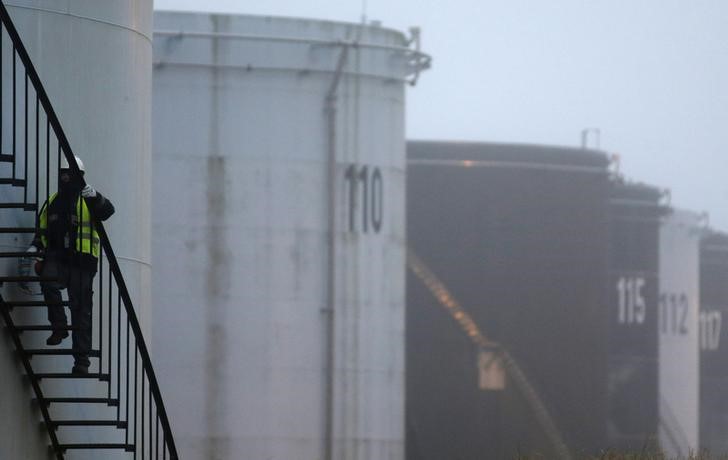Investing.com - Oil prices pulled back from the day’s lows on Wednesday after data showing a smaller than expected build in U.S. crude stockpiles last week.
Crude oil for June delivery on the New York Mercantile Exchange was last down 50 cents, or 1.08% at $42.12 a barrel at 1032 ET, from $41.51 ahead of the data.
Global benchmark Brent was down 38 cents or 0.93% to $43.60 on the ICE Futures Europe exchange from $43.15 earlier.
The Energy Information Administration reported that U.S. crude inventories increased by 2.08 million barrels in the latest week, bringing total crude stocks to 538.6 million barrels.
Analysts had expected a storage build of 2.4 million barrels.
Total motor gasoline inventories decreased by 0.1 million barrels last week, the EIA said, while distillate fuel inventories decreased by 3.6 million barrels.
Crude production also continued to decline, falling to an average 8.95 million barrelsper day from 8.98 million in the prior week. Production has now fallen in 11 out of the past 12 weeks as low prices continue to erode shale output.
The figures came a day after industry group the American Petroleum Institute said U.S. crude stocks rose by 3.1 million barrels to 539.5 million last week, against expectations of a 1.6 million barrel increase.
Oil prices tumbled earlier Wednesday as a three day strike by Kuwaiti workers ended, with traders anticipating that the country’s production levels will quickly return to normal.
The nationwide strike in Kuwait removed 1.3 million barrels a day from the market and helped prop up oil prices after major producers failed to agree on an output freeze at weekend talks in Doha.
The end of the strike saw concerns about a global supply overhang return to the forefront.
Talks between major producers on Sunday ended without an agreement on a production freeze intended to rein in ballooning overproduction that has seen prices sink from levels as high as $115 hit in mid-2014.
The talks collapsed after Saudi Arabia demanded that OPEC member Iran also join the agreement to cap its output.
Iran has said it will not participate in a production freeze until its output levels return to where they were before international sanctions were imposed over its nuclear program.
